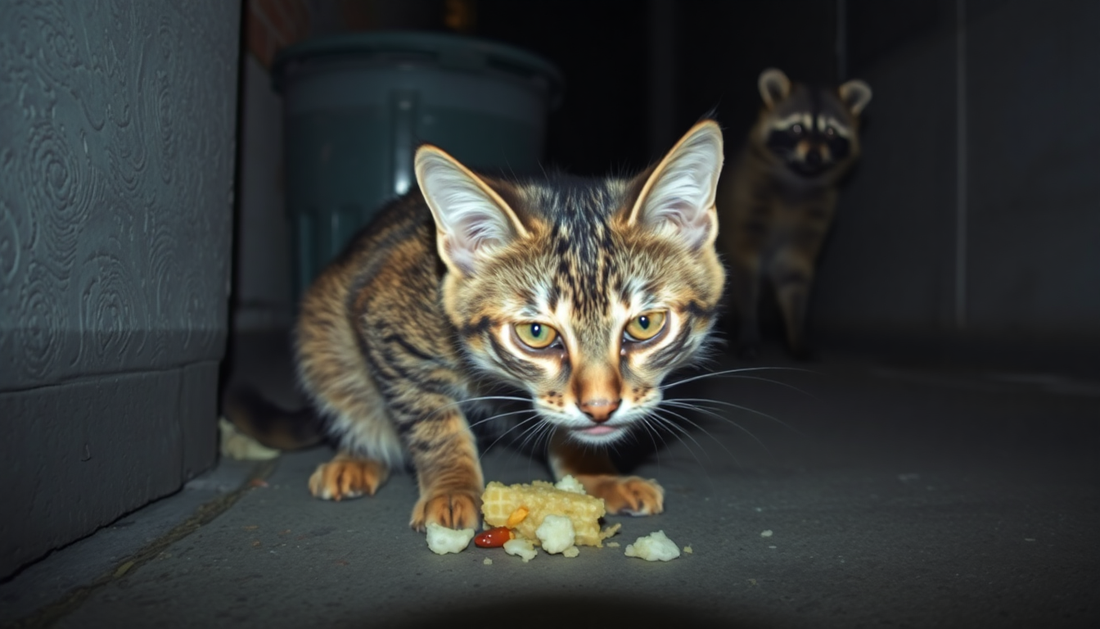
Got Feral Cats? Here's What To Know
Share
Feral cats are a complex and often misunderstood part of our communities. These cats have never been socialized with humans and can pose unique challenges when it comes to their care and management. But with the right approach, we can create a more humane environment for these resilient felines.
At Spot Pet Supply, we believe in practical solutions that prioritize the welfare of all animals. That's why we're here to share some insights on how to handle the presence of feral cats in your neighborhood.
First, it's important to understand the difference between a feral cat and a stray cat. Feral cats are essentially "wild" cats that have had little to no human interaction, while stray cats are those that were once pets but have since been abandoned or lost. Feral cats are often skittish, wary of human contact, and may exhibit more aggressive behaviors.
When it comes to identifying feral cats, look for certain physical and behavioral cues. Feral cats tend to have a lean, muscular build, a thick coat, and a wary, defensive posture. They may also avoid eye contact, hiss, or swat when approached. In contrast, stray cats are often more approachable and may exhibit behaviors like meowing or rubbing against people.
The most humane approach to managing feral cat populations is through Trap-Neuter-Return (TNR) programs. These initiatives involve trapping the cats, spaying or neutering them, and then returning them to their original outdoor location. This helps to control the population growth and prevent the birth of more kittens that may end up in shelters or living on the streets.
In addition to TNR, you can also help feral cats by providing them with shelter and food. DIY feral cat houses, made from simple materials like plastic storage bins or wooden crates, can offer them a warm, dry place to rest. And by setting up designated feeding stations, you can ensure they have access to consistent, nutritious meals. However, be mindful of attracting other critters such as racoons and possums. Making more food available than the cat can consume will guarantee visits to your house by these undesirable animals which can carry a number of diseases. In some areas, larger animals such as coyote and bears could also be attracted to the scent of excess food.
Of course, it's also very important to be mindful of local ordinances and regulations when it comes to feeding and caring for feral cats. Some communities have specific guidelines or restrictions, so it's always a good idea to research and understand those rules in your area. For example, many cities have ordinances requiring permits for people who provide care to free-roaming feral cats.
If you're looking to get more involved in feral cat welfare, consider reaching out to local rescue organizations or animal welfare groups. These dedicated teams often have resources, training, and volunteer opportunities to help you make a difference.
At SpotPetSupply.com, we're proud to support the efforts of these amazing organizations. A portion of our profits is donated towards organizations that focus on animal welfare. So, you can feel good knowing that your shopping helps to make a real impact.
Whether you're dealing with a single feral cat or an entire colony, remember that there are compassionate solutions available. By working together, we can create a more humane world for all of our furry friends.
Identifying Feral Cats
Feral cats can be distinguished from stray cats by their physical appearance and behavior. Feral cats tend to have a lean, muscular build, a thick coat, and a wary, defensive posture. They may also avoid eye contact, hiss, or swat when approached. In contrast, stray cats are often more approachable and may exhibit behaviors like meowing or rubbing against people.
Humane Approaches to Handling Feral Cats
The most effective way to manage feral cat populations is through Trap-Neuter-Return (TNR) programs. These initiatives involve trapping the cats, spaying or neutering them, and then returning them to their original outdoor location. This helps to control the population growth and prevent the birth of more kittens that may end up in shelters or living on the streets.
Creating a Feral Cat-Friendly Environment
In addition to TNR, you can also help feral cats by providing them with shelter and food. DIY feral cat houses, made from simple materials like plastic storage bins or wooden crates, can offer them a warm, dry place to rest. And by setting up designated feeding stations, you can ensure they have access to consistent, nutritious meals.
Working with Local Resources
If you're looking to get more involved in feral cat welfare, consider reaching out to local rescue organizations or animal welfare groups. These dedicated teams often have resources, training, and volunteer opportunities to help you make a difference. At Spot Pet Supply, we're proud to support the efforts of these amazing organizations, with a portion of every purchase going towards funding programs that improve the lives of feral and stray cats.
If you're looking for information regarding adopting a rescue cat, check out our eBook at Adopting a Rescue Cat: A Step-by-Step Guide (eBook) – Spot Pet Supply. Use Discount Code ADOPT80 for 80% off.
